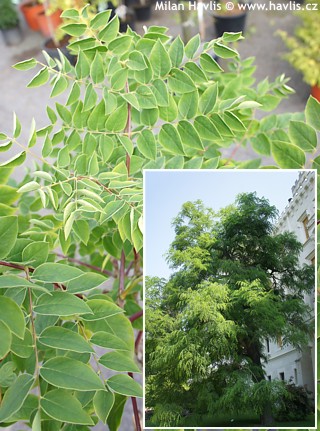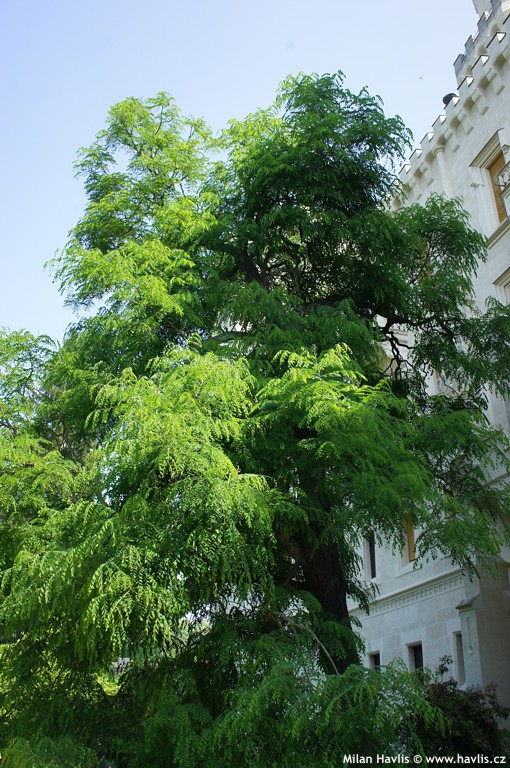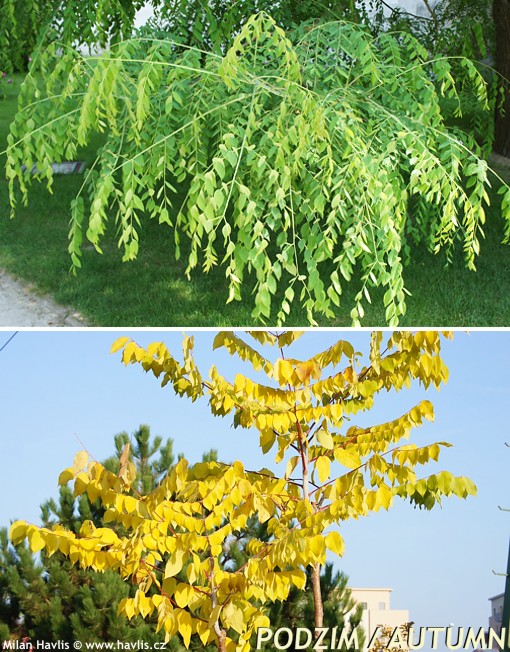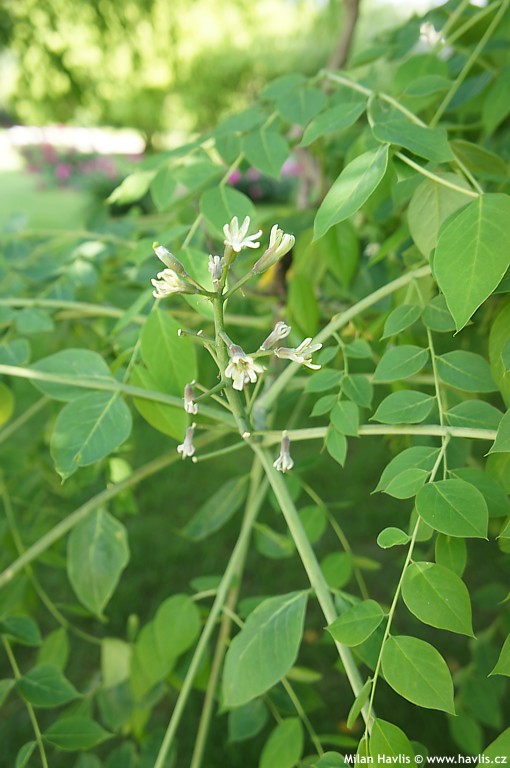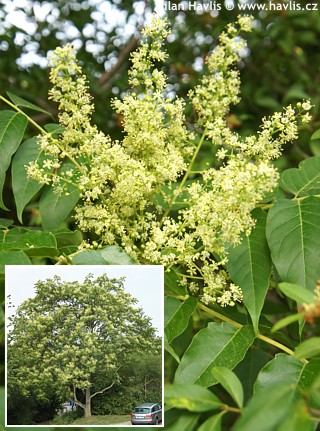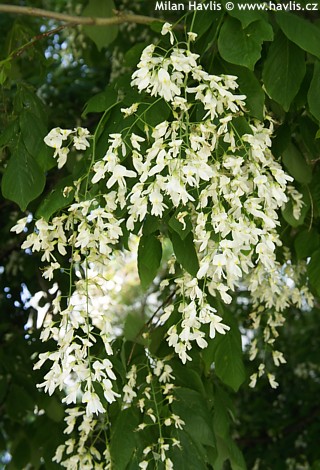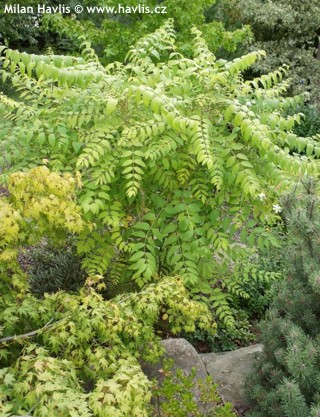Gymnocladus dioica Kentucky coffee tree
Kentucky coffee tree is a gorgeous tree from North America that is no doubt rare in Europe. The key feature are its large, bi-pinnate leaves that can grow anything from 40 cm up to 1m long. They are composed of rich forest green, narrowly ovate to elliptic, 3-5 cm long, sharply pointed leaflets, turning cheerful yellow in autumn whilst keeping the stalks rich purple red.
In early summer, white, small, star-shaped flowers are formed in racemes that are about 10 cm long on male, and up to 30 cm long on female plants which then produce bean-like seedpods with seeds that used to be consumed as coffee substitute hence its name. Still, some sources believe that the seeds are toxic. Flowering is limited to regions with hot and long summers.
Kentucky coffee tree grows slowly, and is rather spreading. Only mature plants form a more upright, somewhat oval-shaped crown. Thanks to its exotic, very large leaves it is commonly used in jungle and exotic-style landscapes where they perfectly imitate rainforest flora.
Its former name gymnocladus canadensis respected its place of origin, however, nowadays the commonly preferred name is gymnocladus dioica (female). It is believed that dioica refers to the fact that the plant has male and female reproductive organs on separate trees = being dioecious. Yet, the exact translation of its Latin name means dio = two and ica = hit/struck which would refer to its bi-pinnate = twice compound leaves.
Kentucky coffee tree grows best in deep, fertile, evenly moist but well-drained soil of any pH, preferably in full sun. It emerges later than most other deciduous trees and can be pruned in early spring. Hard pruning will encourage new growths of larger leaves but will prolong waiting for a tall tree. Pest and disease resistant, hardy to min. -34°C (USDA zone 4).
Last update 10-01-2013

































